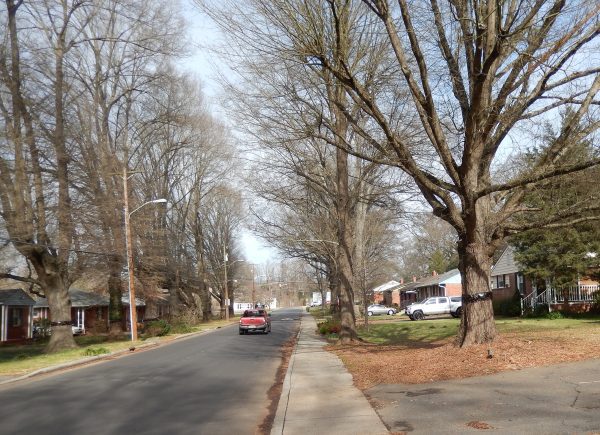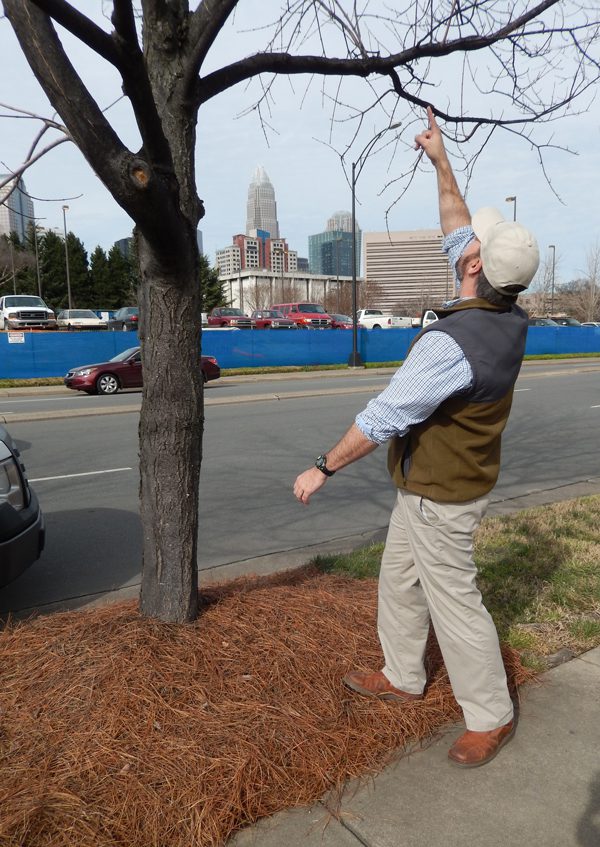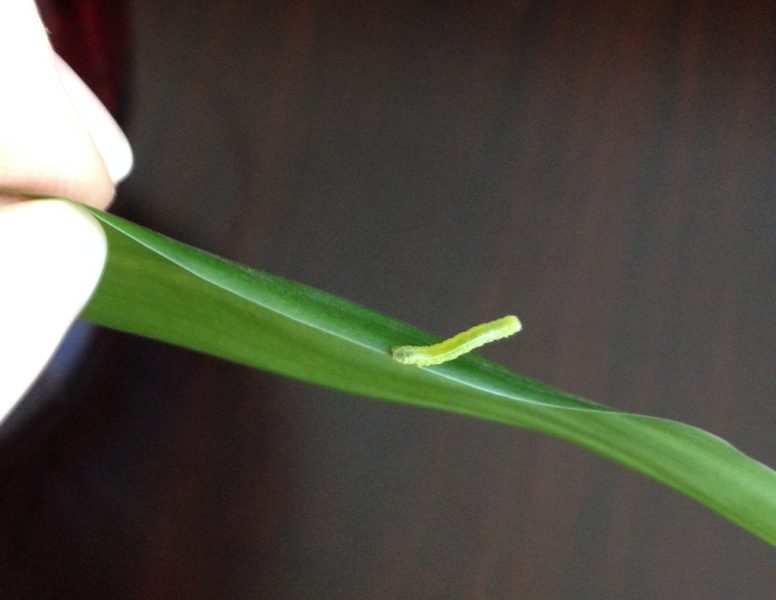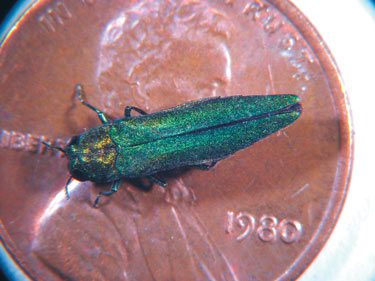Disease and old age afflict Charlotte’s tree canopy

Lurking silently beneath the beauty of Charlotte’s tree canopy is a persistent problem with ailing trees. The issue significantly affects the city’s efforts to preserve and replenish its most treasured amenity.
Major challenges include:
- Tree diseases
- The stresses of an urban, high-rise environment on uptown street trees
- The age of the tree canopy, particularly in center city neighborhoods. Some of the city’s most magnificent trees were planted between 1895 and 1920.
“The biggest issue is the aging canopy, managing those trees and having to take them down and figuring out what the path forward is,” says Erin Oliverio, Charlotte’s tree canopy program manager.
A recent study shows that Charlotte’s tree canopy covers 47 percent of its total land, with 51 percent coverage across Mecklenburg County. That gives the community a nationally ranked urban forest considered one of the best in the country. City officials have set a goal to increase the canopy to 50 percent by the year 2050, an ambitious plan that would mean planting 500,000 trees as well as a concerted effort to protect and replenish trees during commercial and residential development.
While officials encourage preservation and planting citywide through its work with the nonprofit TreesCharlotte, one of its primary responsibilities is to manage street trees and others on city-owned property. There are estimated 180,000 public street trees, about 10 percent of the tree canopy in the city.
In uptown Charlotte, where city officials’ decision in the 1980s to line sections of Tryon Street with willow oaks gives the area a distinctive character, many trees are beginning to suffer.
Many of the willow oaks are affected by pest diseases as well as the stresses of growing in restricted spaces and the canyon-like environment created by the skyscrapers that block much of the direct sun. “They’ve done well overall,” says City Arborist Timothy Porter. “But the conditions are not great for trees to grow. You put them in an urban area and there is a lot coming at them. They can’t grow in a healthy way and tend to be stressed out.”
Unlike the oaks, red maple trees— which are largely clustered in the Fourth Ward neighborhood and along McDowell and Brevard streets uptown—are faring worse. Those trees, planted by developers under city streetscape guidelines beginning in the early 1990s, are being heavily affected by so-called scale insects which cover their bark by the thousands and suck out nutrients. In addition, the species does not thrive when surrounded by asphalt.
“A large quantity will die out, and the city will have to replant them or the property owner will have to replant them,” says Porter. Many of the red maples may need to be replaced in the next 15 to 20 years.
In response to the struggle of red maples, which have been highly popular and heavily planted in urban areas across the southeast, a recent revision of Charlotte’s tree ordinance banned developers from planting this species in parking lots.
In addition, Porter says officials will study potential changes to the uptown streetscape plan to see whether any changes are needed in the types of trees allowed in an urban environment. That evaluation will be part of an Urban Forest Masterplan, which officials will begin developing this spring. It will include strategies for tree management, a review of the city’s tree ordinance and will be a comprehensive plan for protecting Charlotte’s tree canopy. 
Among pests and other diseases affecting trees, cankerworms began affecting trees beginning in the 1980s and have not subsided in their attack on hardwoods, particularly willow oaks. According to Porter, Charlotte is one of the hardest hit cities in the country by cankerworms, which are the caterpillars of moths and eat the buds and leaves of trees.
The infestation is heaviest on willow oaks in center city neighborhoods such as Myers Park, Dilworth and Wilmore. The city focuses on banding street trees with sticky traps, which prevent cankerworms from climbing trees to lay eggs. The city also offers workshops and grants for organized neighborhood tree banding. The defoliation caused by cankerworms weakens trees, making them more susceptible to the effects of drought and tree diseases. Over the past 20 years, the city has conducted three aerial sprays to help manage cankerworms, including the last one in 2008.
Another tree pest that Porter says is likely to kill some trees has not yet arrived but is on the way.
The emerald ash borer, an insect from Asia that has spread through travel, has been discovered in Lincoln and Iredell counties north and northwest of Charlotte. “The emerald ash is a minor tree in Charlotte,” says Porter, “and represents less than one percent of street trees.”
While the emerald ash tree mostly grows near creeks and streams, the disease could kill trees in several areas where a little more than 200 have been planted along streets. They include the University Park neighborhood in northwest Charlotte, South Mint Street across from Bank of America Stadium uptown as well as several streets in the Park Crossing and Beverly Crest neighborhoods in south Charlotte.
“The plan now is to wait and see and respond,” says Porter. “We will create an outreach plan and a replanting plan. We will be ready to get the word out to the public.”
As the city develops strategies for dealing with its tree issues, Porter says he wants some answers. Why are cankerworms so bad in Charlotte? How significant is the impact of the urban environment on uptown trees? He has reached out to researchers at North Carolina State University in Raleigh.
“I’ve taken the approach that Charlotte’s tree canopy can be a laboratory for scientists,” says Porter. “We want to know more about what’s going on so we can better manage our efforts.”